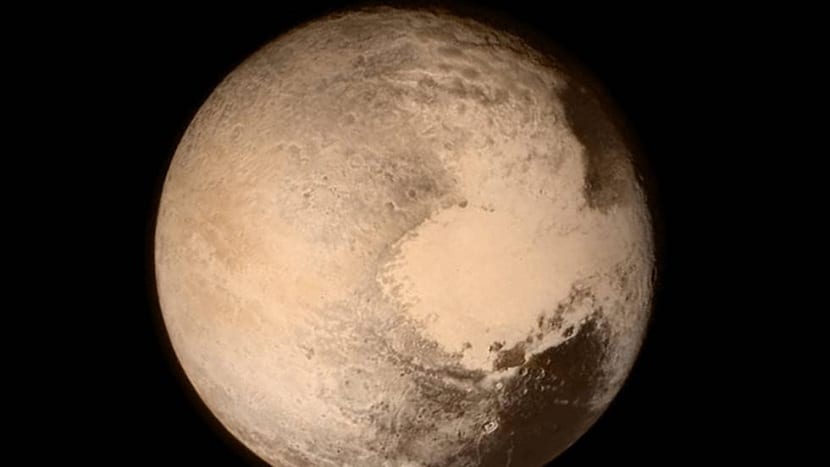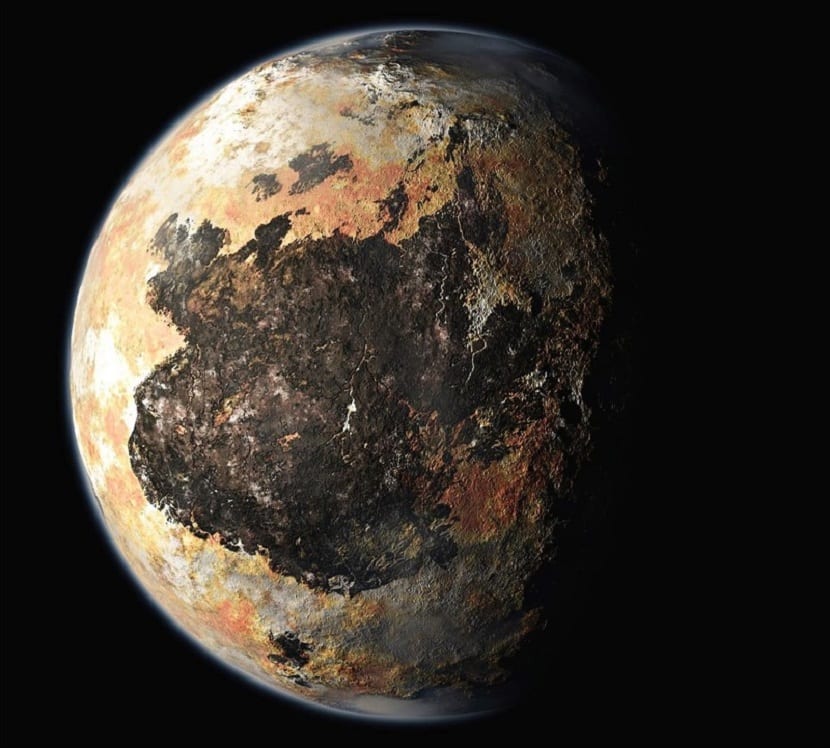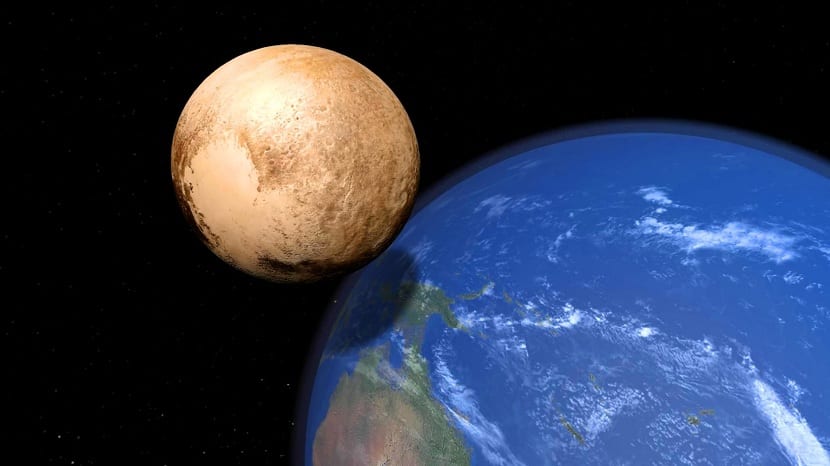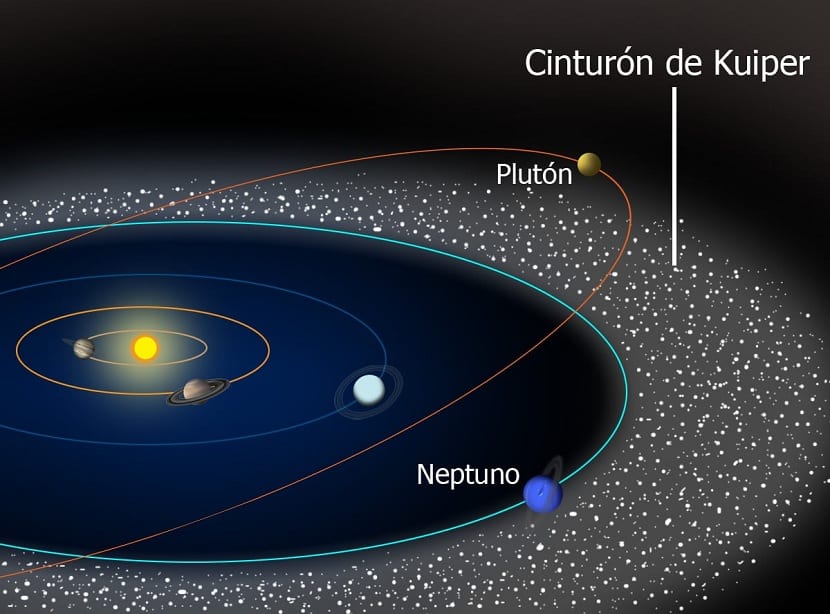
Pluto, the forgotten planet that is no longer a planet. In our Solar system there were nine planets before until what was or was not a planet was redefined and Pluto had to come out of the conjunction of planets. After 75 years in the planet category, in 2006 it was considered a Dwarf Planet. However, the importance of this planet is quite great, since the celestial bodies that pass through its orbit are called Plutoid.
In this article we are going to tell you all the secrets and characteristics of the dwarf planet pluto. Do you want to know more about it? Read on to learn more.
Pluto characteristics

This dwarf planet goes around the Sun every 247,7 years and does so by traveling an average distance of 5.900 billion kilometers. Pluto's mass is the equivalent of 0,0021 times that of Earth or one-fifth the mass of our moon. This makes it too small to be considered a planet.
It is true that for 75 years it has been a planet by the International Astronomical Union. In 1930 it was named after the Roman god of the underworld.
Thanks to the discovery of this planet, great later discoveries such as the Kuiper Belt have been made. It is considered the largest dwarf planet and behind him Eris. It is made up mainly of some types of ice. We find ice made of frozen methane, another of water, and another of rock.
The information on Pluto has been very limited since the technology since 1930 was not very advanced as to contribute great discoveries of a body so far from Earth. Until then it was the only planet that had not been visited by a spaceship.
In July 2015, thanks to a new space mission that left our planet in 2006, it was able to reach the dwarf planet, obtaining a large amount of information. The information took a year to reach our planet.
Information about the dwarf planet

Thanks to the increase and development of technology, great results and information about Pluto are being obtained. Its orbit is quite unique given its rotational relationship with its satellite, the axis of rotation, and the variations in the amount of light reaching it. All these variables make this dwarf planet a great attraction for the scientific community.
And it is that it is further from the Sun than the rest of the planet that make up the solar system. However, because of the eccentricity of the orbit, it is closer than Neptune for 20 years of its orbit. In January 1979 Pluto traversed the orbit of Neptune and stayed closer to the Sun until March 1999. This event will not occur again until September 2226. Despite the fact that one planet enters the orbit of the other, there is no possibility of collision. This is because the orbit of 17,2 degrees with respect to the plane of the ecliptic. Thanks to this, the path of the orbit means that the planets are never found.
Pluto has five moons. Although it is a very small size compared to our planet, it is 4 moons more than us. The largest moon is called Charon and is about half the size of Pluto.
Atmosphere and composition

Pluto's atmosphere is 98% nitrogen, methane and some traces of carbon monoxide. These gases exert some pressure on the surface of the planet. However, it is about 100.000 weaker than the pressure on Earth at sea level.
Solid methane is also found, so it is estimated that the temperatures on this dwarf planet are less than 70 degrees Kelvin. Due to the peculiar type of orbit, temperatures have a fairly large range of variation throughout it. Pluto can approach the Sun up to 30 Astronomical Units and move away until 50. As it moves away from the Sun, a thin atmosphere appears on the planet, freezing and falling on the surface.
Unlike other planets like Saturn y Jupiter, Pluto is very rocky compared to other planets. After the studies carried out, it has been concluded that, due to the low temperatures, most of the rocks on this dwarf planet are mixed with ice. Ice of different origins as we have seen previously. Some mixed with methane, others with water, etc.
This can be considered given the type of chemical combinations that occur at low temperature and pressure during the formation of the planet. Some scientists have the theory that Pluto is really a lost satellite of Neptune. This is because it is possible that this dwarf planet was thrown into a different orbit during the formation of the Solar System. Therefore, Charon would be formed as a result of the accumulation of the lighter materials resulting from the collision.
Rotation of Pluto

Pluto takes 6384 days to turn around itself, since it does so in a synchronized way with the orbit of its satellite. Because of this, Pluto and Charon are always on the same face to each other. The axis of rotation of the Earth is 23 degrees. On the other hand, that of this planetoid is 122 degrees. The poles are almost in their orbital plane.
When it was first discovered, the glow of its south pole was sighted. As our view of Pluto shifted, the planet seemed to fade. At present we can see the equator of this planetoid from Earth.
Between 1985 and 1990, our planet was aligned with the orbit of Charon. For this reason, an eclipse of each of the days of Pluto could be observed. Thanks to this fact, a lot of information about the albedo of the dwarf planet could be collected. We remember that albedo is what defines the reflectivity of a planet of solar radiation.
I hope that with this information you can better know the dwarf planet Pluto and its curiosities.
Very interesting.
And thank you, it helped me to do a great job !!